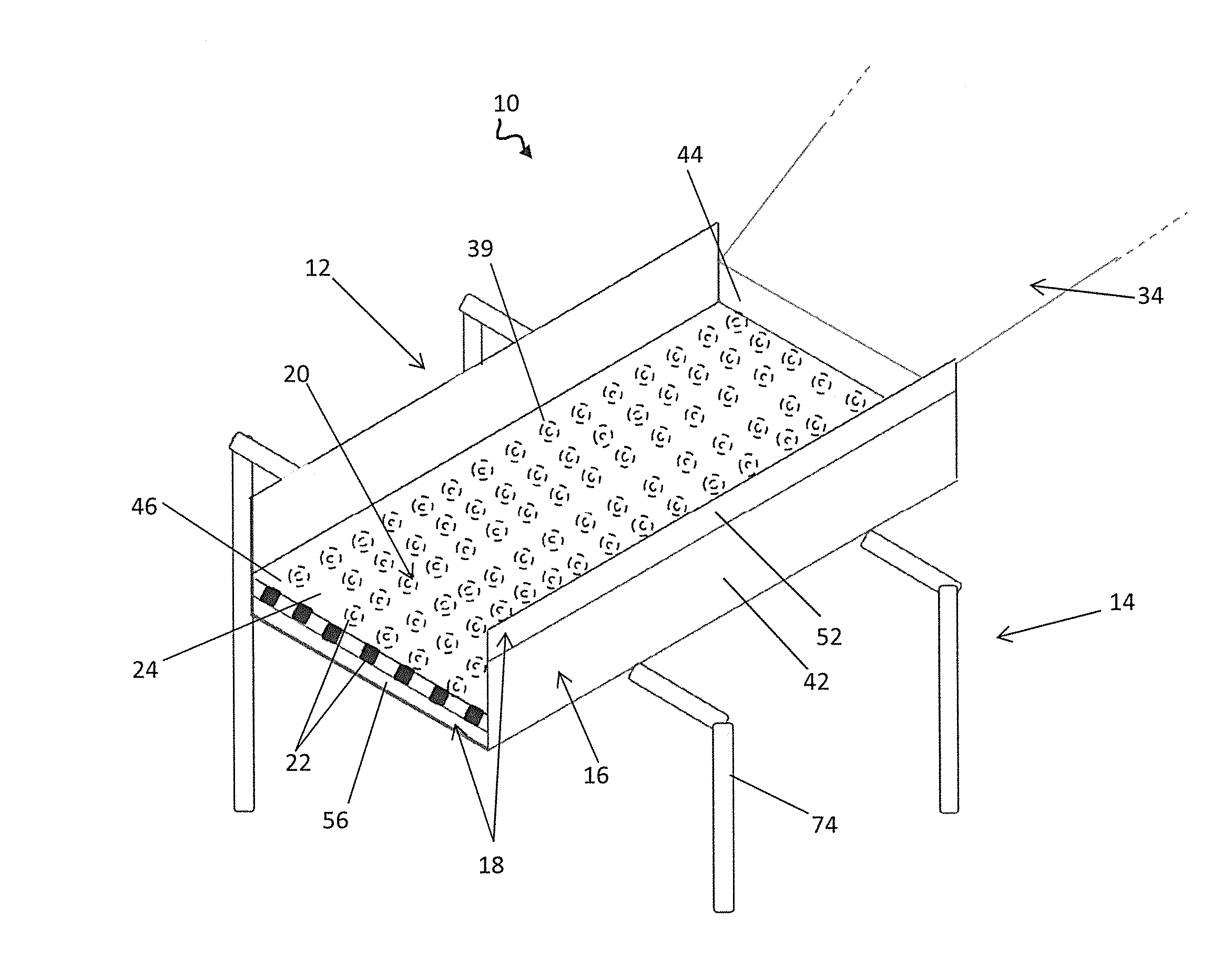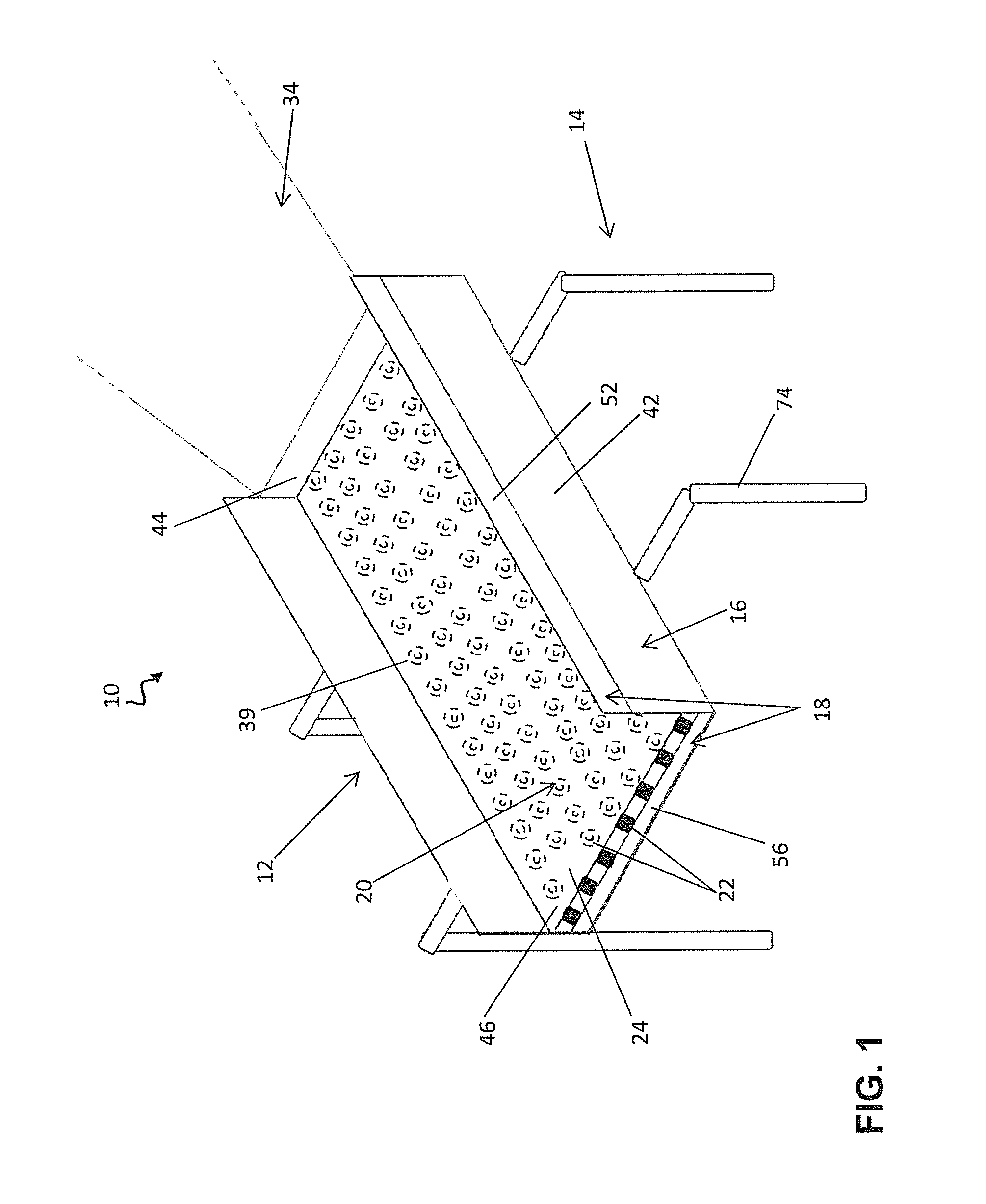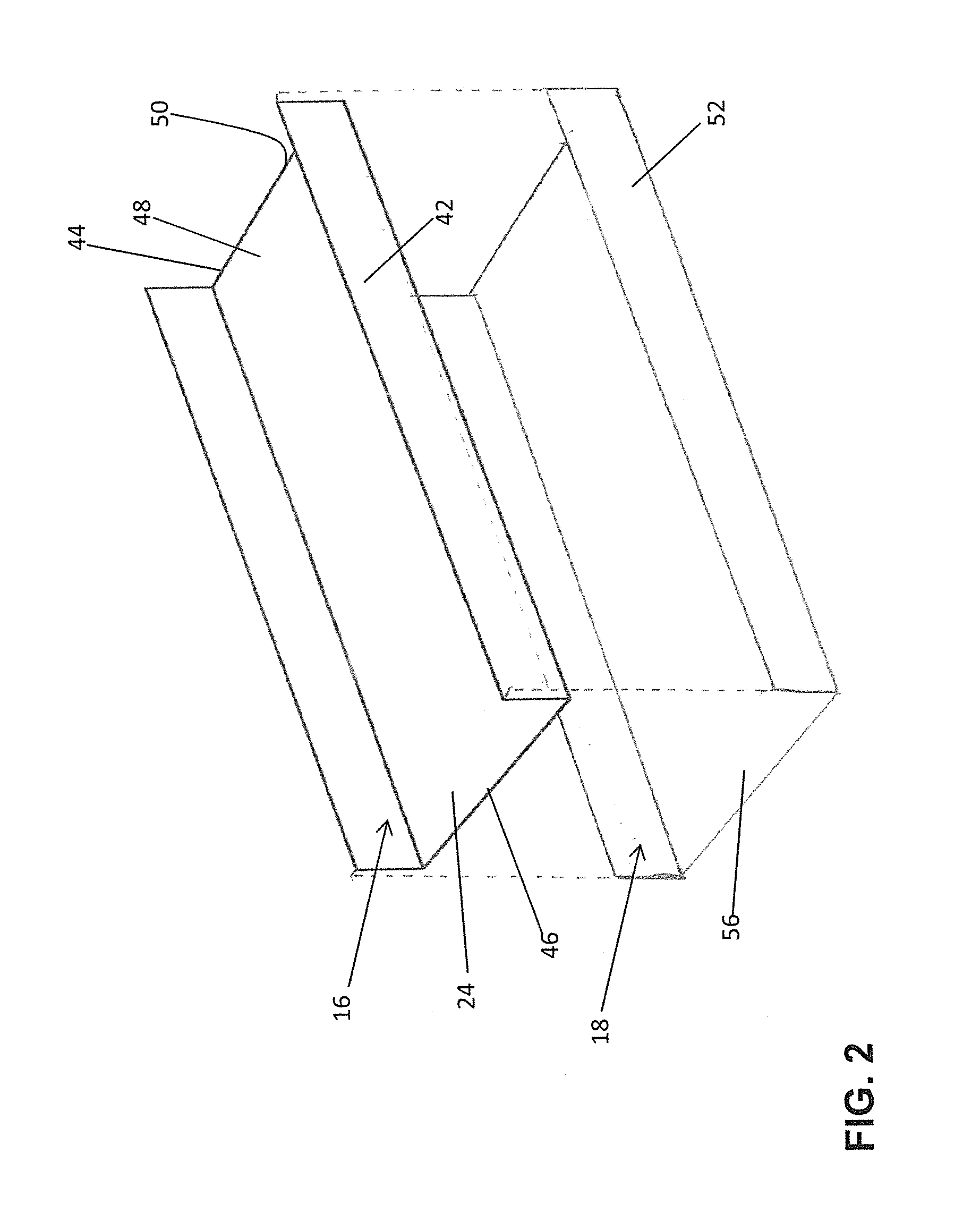Gravity recovery system and method for recovery of heavy metals from sands and gravels
a gravity recovery and heavy metal technology, applied in magnetic separation, solid separation, chemistry apparatus and processes, etc., can solve the problems of cumbersome process, no device is of use for the recovery of heavy metals, and no flexibility in riffle size, shape or distribution,
- Summary
- Abstract
- Description
- Claims
- Application Information
AI Technical Summary
Benefits of technology
Problems solved by technology
Method used
Image
Examples
example 1
[0067]A prototype gravity recovery system 10 was tested at two sites, a glacial kame on the Grand River near Lyons, Mich., and a gravel pit excavating a glacial feature near Saranac, Mich. The channeling member 16 of the prototype was 5 feet in length and 6 inches in width. For purposes of experimentation with diverse magnetic arrays 20, magnets 22 were affixed to the bed 56 with Duct Seal Compound. The magnetic array 20 was arranged to produce a riffle array 30 including a mixture of types of magnetite riffles 32, similar but not identical to the riffle array 30 depicted in FIG. 6C. The riffle array 30 is described in an order proceeding from the head end 44 of the channeling member 16 to the downstream end 46. The riffle array 30 included three linear riffles 36 spaced 0.5 inches apart; a first group of three mutually parallel angled linear riffles 37 spaced 0.5 inches apart, each angled linear riffle 37 being situated at 30° to the flow of slurry; a second group of mutually paral...
example 2
[0072]The prototype described in Example 1 was used to separate heavy metal particles from a white silica sand produced commercially for sand blasting and landscaping (Readi-Mix). A sample of unseparated sand and a sample of material recovered from the sand by separation in the prototype device were submitted to assay by a commercial assay firm (Activation Laboratories LTD, Ancaster, Ontario, Canada). Representative comparisons of metal concentrations in the unseparated and recovered samples are shown in TABLE 1. Especially notable are the marked enrichment of uranium (5,233%), zirconium (greater than 735%), hafnium (14,333%) yttrium (3,533%), and chromium (greater than 150%). In a similar separation of Readi-Mix sand (not shown) yields of recovered metals by weight included uranium at 16.3 g / ton, yttrium at 109 g / ton, and zirconium at 19.9 kg / ton. Considerable enrichment of the lanthanide series of elements was also achieved, including those important in magnet and battery producti...
example 3
[0074]Coal fly ash is useful as a bonding agent in cement, but its use is limited by the presence of toxic metals such as mercury. The capability of the separation system 10 to extract and recover toxic metals from coal ash was tested in an experiment in which magnetite riffles were created by directing a flow of commercially processed magnetite (e.g. Dowling Magnets, Elmhurst, Ill.) through the channeling member 16 prior to introducing a slurry of coal fly ash. This “pre-salting” of the separation system 10 with magnetite was necessary because of presumed low levels magnetite in typical coal ash.
[0075]Representative comparisons of metal concentrations in the unseparated coal ash and recovered samples are shown in TABLE 3. The recovered samples include both “processed target material”, that is, metals released by dispersion of the magnetite riffles 32; and “magnetite residuals”, that is, metals still associated with the magnetite particles after dispersion. Both types of recovered s...
PUM
 Login to View More
Login to View More Abstract
Description
Claims
Application Information
 Login to View More
Login to View More - R&D
- Intellectual Property
- Life Sciences
- Materials
- Tech Scout
- Unparalleled Data Quality
- Higher Quality Content
- 60% Fewer Hallucinations
Browse by: Latest US Patents, China's latest patents, Technical Efficacy Thesaurus, Application Domain, Technology Topic, Popular Technical Reports.
© 2025 PatSnap. All rights reserved.Legal|Privacy policy|Modern Slavery Act Transparency Statement|Sitemap|About US| Contact US: help@patsnap.com



